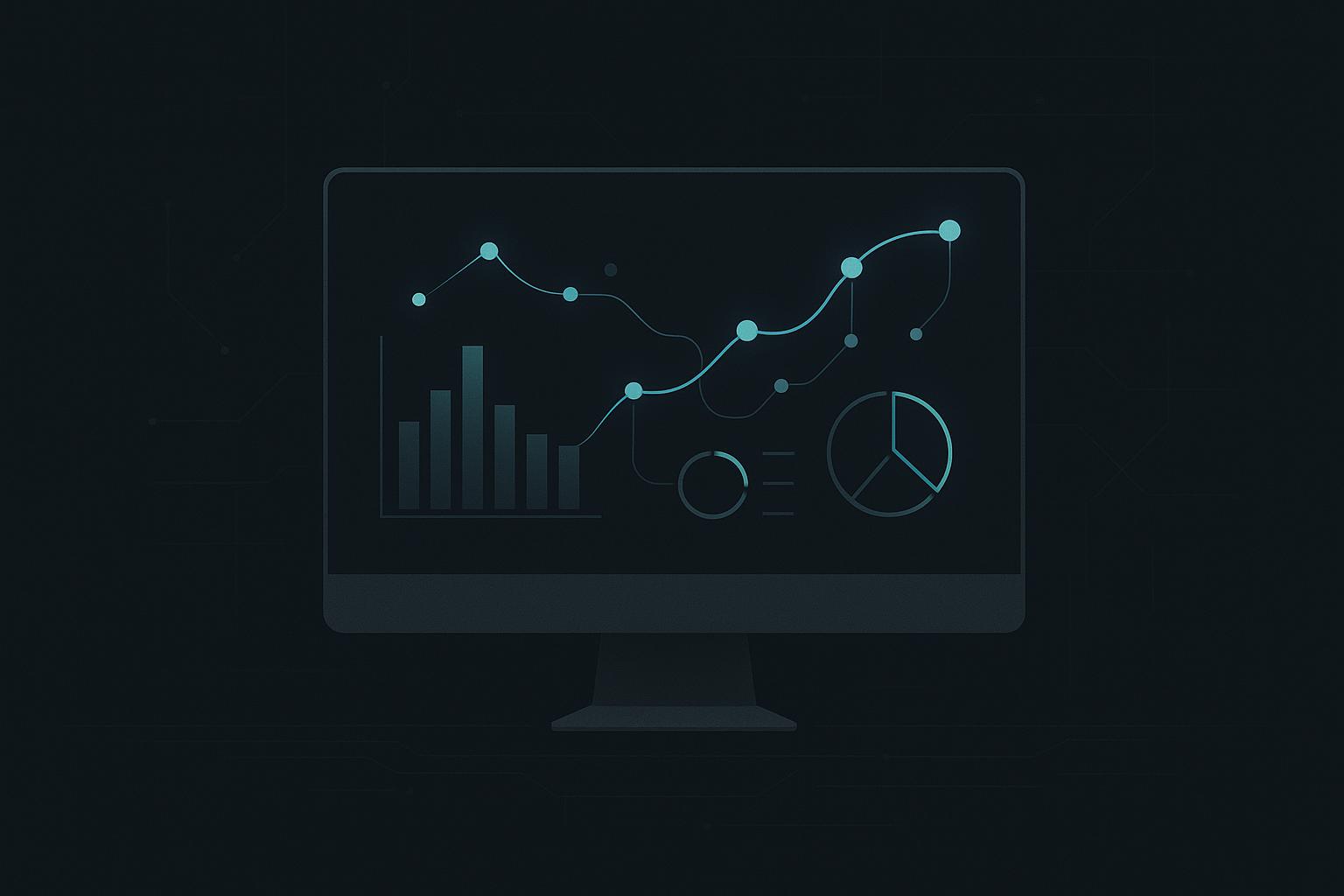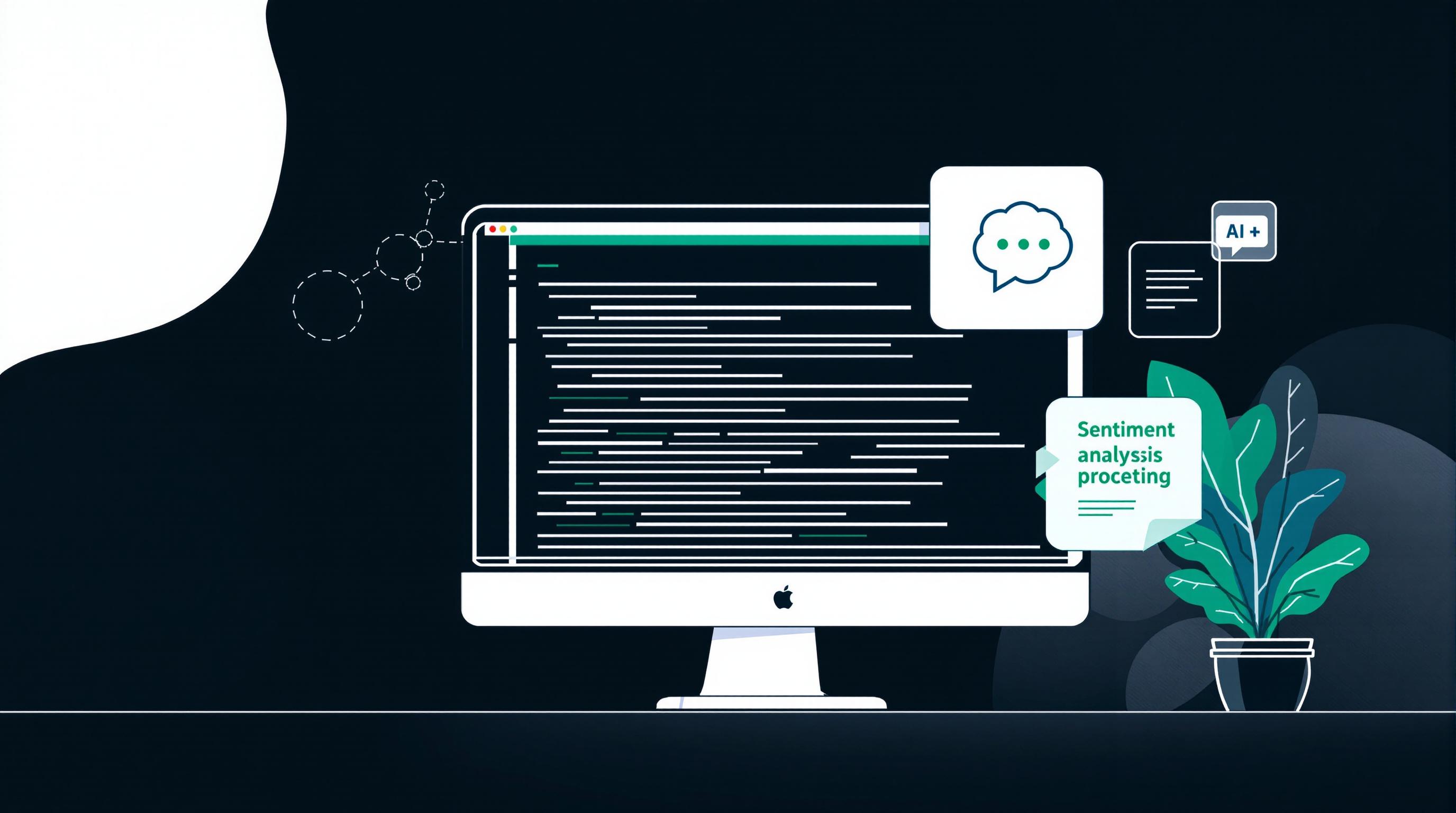Web scraping is a powerful tool for businesses to collect and analyze competitor data, market trends, and customer behavior. It automates data collection, making it faster, more accurate, and cost-effective. Here's what you need to know:
-
What is Web Scraping?
It's a method to extract data from websites using automated tools, turning unstructured content into usable formats like spreadsheets or APIs. -
Why Use It?
Companies like Amazon use web scraping for real-time pricing adjustments. It helps businesses with:- Automated Data Collection: Saves time and reduces errors.
- Real-Time Monitoring: Quickly adapt to market changes.
- Scalable Analysis: Handles large datasets efficiently.
- Cost-Effectiveness: Reduces research costs.
- Comprehensive Coverage: Tracks multiple competitors simultaneously.
-
Legal Considerations
Web scraping is generally legal for publicly available data but requires compliance with copyright laws, data privacy rules (like GDPR), and website terms of service. -
Key Tools and Features
Platforms like InstantAPI.ai simplify web scraping with features like JavaScript rendering, proxy management, CAPTCHA bypass, and customizable outputs. -
Use Cases
- Price Monitoring: Track competitors' prices, discounts, and stock levels.
- Product Analysis: Identify market trends and improve product offerings.
- Review Analysis: Understand customer sentiment to refine strategies.
Web scraping transforms raw data into actionable insights, helping businesses stay competitive and make informed decisions.
Getting Started with Web Scraping Tools
Web Scraping Tools Overview
When choosing web scraping tools, look for features that simplify and automate competitive analysis.
Here are some key features to consider:
| Feature | Benefit |
|---|---|
| JavaScript Rendering | Extracts data from dynamic websites. |
| Proxy Management | Ensures consistent and reliable data collection. |
| CAPTCHA Bypass | Keeps scraping uninterrupted. |
| Customizable Output | Provides data in your preferred format. |
| Worldwide Coverage | Offers access to global market data. |
These features are crucial for gathering insights that can guide strategic decisions. Tools like InstantAPI.ai's Web Scraping API showcase these capabilities, delivering accurate data extraction with a success rate of over 99.99%. Its AI-powered system automatically formats the data, saving time and avoiding issues like broken scrapers.
Once you've selected a tool, the next step is managing access effectively with proxy strategies.
Managing Proxies and Access
To ensure smooth and uninterrupted scraping, dynamic IP rotation and CAPTCHA handling are essential. InstantAPI.ai provides access to a vast network of over 65 million rotating IPs across 195 countries, ensuring reliable data collection.
Key strategies for proxy management include:
1. IP Rotation
Switching between premium residential and stealth proxies helps maintain access without interruptions.
2. Geographic Distribution
Using local IPs to access websites improves accuracy and success rates, especially for region-specific data like pricing and availability.
3. CAPTCHA Management
Advanced systems mimic human-like behaviors to reduce CAPTCHA triggers, ensuring seamless scraping.
Using these strategies, InstantAPI.ai simplifies the process for both beginners and experts, making it a versatile solution.
InstantAPI.ai Quick Start Guide

InstantAPI.ai offers two straightforward options to get started:
- For non-technical users: The Chrome extension is perfect. For $15, you get 30 days of unlimited scraping, no coding required, and instant results.
- For developers and enterprises: The Web Scraping API costs $0.005 per page with no minimum spend. It supports advanced needs like:
- Custom data extraction
- Real-time competitor tracking
- Automated pricing analysis
- Monitoring market trends
"After trying other options, we were won over by the simplicity of InstantAPI.ai's Web Scraping API. It's fast, easy, and allows us to focus on what matters most - our core features." - Juan, Scalista GmbH
With its AI-driven approach, InstantAPI.ai ensures dependable data extraction while staying compliant with regulations.
Finding and Collecting Competitor Data
Key Data Points to Monitor
To effectively analyze competitors, focus on tracking specific metrics that can guide your strategies. Here's a breakdown of important categories to keep an eye on:
| Category | Metrics to Track | Why It Matters |
|---|---|---|
| Pricing | Base prices, discounts, seasonal adjustments | Helps refine your pricing approach |
| Product | Features, specs, stock levels | Influences product development |
| Marketing | Promotions, offers, messaging | Shapes your marketing strategy |
| Customer | Reviews, ratings, sentiment | Enhances customer experience |
Analyzing Website Structure
Understanding the layout of a competitor's website is key to gathering accurate data. Tools like Chrome DevTools can help you identify HTML patterns and locate the information you need. Here's how you can approach this:
- Inspect Elements: Use the browser's inspect tool to find where the desired data is located in the HTML.
- Map Data Locations: Determine the structure of pages and pinpoint where key details are displayed.
- Handle Dynamic Content: Identify elements rendered by JavaScript, as they may need special attention.
For a more streamlined process, platforms like InstantAPI.ai can automate much of this work. Their AI-powered system simplifies HTML analysis, making data extraction more efficient and reliable.
Planning Your Data Collection
Once you've identified what to track and how to navigate competitor websites, the next step is building a solid plan for collecting the data. For example, Microsoft uses web scraping to gather user feedback from various sources, enabling them to prioritize updates based on customer needs. Here's how to create an effective plan:
-
Set Clear Goals
Start by defining specific objectives that align with your business priorities. Focus on metrics that directly influence your decisions. -
Establish Parameters
Determine how often you'll collect data, set up validation processes, and plan for error handling to ensure smooth execution. -
Ensure Data Quality
Implement checks to maintain accuracy, such as:- Automated verification tools
- Regular audits of collected data
- Consistency reviews to catch discrepancies
"Planning your research is very important to obtain desirable results. In research, the relevance of data cannot be overlooked. It plays a pivotal role in laying a foundation to your study. Improper data has the potential to introduce bias and question the validity of your findings." - Enago Academy
Web Scraping Use Cases
Price Monitoring Systems
Businesses rely on web scraping to automate and adjust prices in real time. Major e-commerce platforms like Amazon, Walmart, and eBay frequently scrape competitor prices to respond quickly to market changes.
Key data points captured by price monitoring systems include:
| Data Type | Purpose |
|---|---|
| Base Price | Tracks standard pricing |
| Promotional Discounts | Monitors temporary offers |
| Inventory Status | Assesses stock levels |
| Shipping Costs | Compares total costs |
With tools like InstantAPI.ai, companies can schedule price monitoring tasks, reducing manual effort and staying competitive in the market.
Next up: how web scraping helps businesses analyze product trends.
Product Market Analysis
Web scraping is a powerful way to track market trends and understand consumer behavior. According to Anis Gandoura, CEO & VP of Engineering at stabler.tech (January 2025), businesses can gather insights on:
- Popular products in various regions
- Seasonal demand changes
- Preferred features
- Stock availability patterns
By combining this data with sentiment analysis from customer reviews, companies can spot new opportunities and address gaps in their offerings.
"Leveraging data scraping for competitive analysis empowers businesses to make more dynamic pricing decisions and maintain a strong foothold in their industry marketplace." - Pricefx
But it doesn’t end with market trends - customer feedback analysis is another critical area.
Review and Feedback Analysis
Web scraping helps businesses dive deep into customer reviews to understand product performance and customer satisfaction. Studies show that 98% of consumers read online reviews before making decisions, proving how valuable this data is for staying competitive.
Key review sources and focus areas include:
| Source Type | Data Points | Analysis Focus |
|---|---|---|
| E-commerce Sites | Star ratings, reviews | Product performance |
| Social Media | Comments, shares | Brand perception |
| Industry Forums | Discussion threads | Technical feedback |
| Review Platforms | Verified reviews | Service quality |
AI-driven scraping tools simplify the process of collecting and analyzing reviews. Sentiment analysis can uncover customer satisfaction trends, helping businesses make informed decisions to improve products and services.
sbb-itb-f2fbbd7
Working with Scraped Data
Data Cleaning Methods
Scraped data in its raw form often needs thorough cleaning to be useful for analysis. Start by removing duplicates and fixing structural inconsistencies, such as varying formats for the same item. For instance, "iPhone 14 Pro" and "iPhone14Pro" should be standardized to ensure accurate results.
Here are some common data cleaning steps:
| Step | Purpose | Common Tools |
|---|---|---|
| Deduplication | Eliminate redundant entries | Pandas drop_duplicates() |
| Standardization | Address inconsistent formats | Regular expressions |
| Handling Missing Data | Fill or remove null values | Pandas fillna() |
| Outlier Detection | Spot unusual data points | Statistical methods |
Data Visualization Tools
After cleaning the data, visualization helps uncover trends and patterns. Turning complex datasets into visual formats makes them easier to interpret. For example, Cyber Monday e-commerce sales hit $12.4 billion in 2023 - a clear indicator of the value of tracking market trends through visuals.
"Choosing the right visualization technique depends on various factors: the type of data (categorical, numerical, time-series, text, etc.), the insights you want to convey (comparisons, trends, relationships, proportions, etc.), and your audience's level of data literacy and familiarity with different visualization types." - Silvia Wutche, Data Content Creator
A great example is Lenovo, which improved efficiency by 95% across 28 countries using Tableau dashboards. With clear and interactive visuals, businesses can easily translate insights into actionable strategies.
Using Data for Business Decisions
To transform cleaned data into meaningful decisions, a structured approach is key. Start by defining metrics that directly support your business goals. For instance, tracking competitor pricing trends can refine your pricing strategy, while analyzing customer feedback can guide product development.
Steps to implement data-driven decisions:
- Set clear KPIs: Align them with your business objectives.
- Use real-time dashboards: Keep data up-to-date and accessible.
- Establish action triggers: Define thresholds that prompt immediate action.
Encouraging data literacy across your organization ensures everyone can leverage insights effectively. Regular training sessions and clear documentation make it easier for teams to understand and apply the data. Finally, maintaining a feedback loop to evaluate the impact of decisions helps refine strategies and supports ongoing competitive analysis.
How to do competitor research with web scraping
Summary and Next Steps
Web scraping offers businesses a powerful way to gather and analyze data for competitive insights. By leveraging this tool, companies can make informed decisions and stay ahead in the market. Here’s a quick overview of its benefits:
| Benefit | Business Impact |
|---|---|
| Pricing Adjustments | Adjust prices based on market conditions |
| Product Tracking | Improve product development and offerings |
| Market Trend Analysis | Stay ahead of industry trends |
| Efficient Data Handling | Scale analysis without extra manual effort |
To get started:
- Identify the specific data you need based on your goals.
- Set clear parameters for collection and focus on key metrics.
- Implement quality checks to ensure the data remains accurate.
For as little as $5 per 1,000 pages scraped through API access, you can begin harnessing the power of web scraping. By combining technical tools with a clear strategy, you can turn raw data into actionable insights that drive growth and sharpen your competitive edge.


